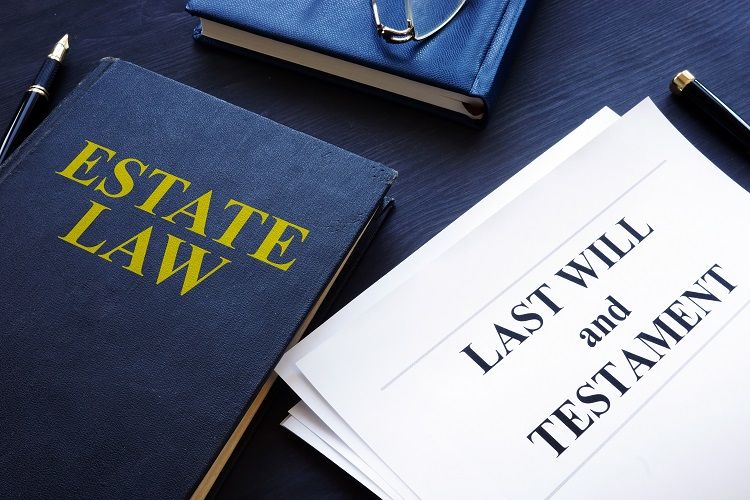Canada does not have an explicit estate tax, however that does not mean your heirs will get everything in your estate tax free

While Canada has no estate tax, death can cause a significant income tax liability (known as "deemed disposition tax") that, without proper estate planning, can leave your heirs with unexpected burdens.
What happens to your assets when you die?
Non-registered assets
You are deemed to sell all of your non-registered assets, such as stocks, bonds, mutual funds and real estate investments immediately before death at their fair market value (FMV). When the FMV exceeds the assets’ adjusted cost base, the result is a capital gain wherein half is taxable to you and must be reported in your final tax return that is filed in the year of your death – from January 1 to the date of death. This final taxation can be substantial, as Canadian federal income tax rates of up to 29% apply, as well as provincial taxes and probate fees (although you can avoid probate costs through proper estate planning).
If you own qualified small business corporation shares, a qualified farm or fishing property upon death, you can claim on your final tax return any remaining lifetime capital gains exemption (up to $800,000) against any capital gains arising from the deemed disposition of your assets.
To avoid, or at least defer, the tax arising from deemed disposition at death, your assets should be transferred to your surviving spouse. Note that if your spouse sells the assets, the tax will apply. In case your assets include rental properties, there may also be a "recapture" of prior-year depreciation claim or capital cost allowance – recapture is fully taxed.
Another way to avoid this tax is to consider leaving appreciated marketable securities to a registered charity through your will. You can completely eliminate the capital gains tax when you donate appreciated publicly listed shares, mutual funds or segregated funds in-kind to charity.
Registered assets
For many Canadians, the largest tax liability their estate faces is the potential tax on the FMV of their registered retirement savings plans (RRSP) or registered retirement income funds (RRIF) upon death. The tax rules require the FMV of your RRSP or RRIF as of the date of death to be included in your final tax return with tax payable at your marginal tax rate for the year of death.
This income inclusion can be deferred if your RRSP or RRIF is left to your surviving spouse or partner, wherein case tax will be payable by the survivor at his/her marginal tax rate in the year when funds are withdrawn from the RRSP or RRIF.
An RRSP or RRIF may also be left to your financially dependent child or grandchild and used to buy a registered annuity that must end when they reach 18 years of age. Doing so is beneficial in that you can spread the tax on the RRSP or RRIF proceeds over several years, which will allow the child or grandchild to take advantage of personal tax credits and graduated marginal tax rates each year until he/she reaches 18 years of age. If the child or grandchild was dependent on you due to physical or mental disability, then the RRSP or RRIF proceeds can be rolled to their own RRSP or RRIF.
Most RRSPs and RRIFs provide immediate access to cash, to fund the tax liability by having the plan liquidate the holdings. The remaining value to be passed on to your heirs, however, can be dramatically reduced.
How can you use trusts to reduce taxes?
Here are the most common types of trusts and when it is best to use them for tax reduction purposes:
Testamentary spousal trust
Upon death, your assets are transferred to a spousal trust on a tax-free basis. It permits only the surviving spouse/partner to receive the income of the trust assets until his/her death. It is taxed at the same tax rates as an individual, so if the spouse or partner is taxed at a higher tax bracket than the trust, it will allow for tax savings.
Multiple testamentary non-spousal trusts
Like a spousal trust, these trusts are taxed at graduated tax rates. The differences are that, here, the beneficiaries are often children and separate trusts are created (usually one per child) instead of just one trust. As such, these trusts allow the tax savings of the graduated tax levels to be multiplied.
Alter-ego trust and joint spousal/common-law partner inter-vivos trusts
To establish these trusts, you need to be at least 65 years of age. You can transfer assets to these trusts without triggering income tax on the accrued capital gain at the time of transfer. In the alter-ego trust, the tax on the accrued gain is deferred until your death. Meanwhile, in the joint spousal/common-law partner trust, the tax can be deferred until the death of the second spouse/ common-law partner. Although these trusts do not reduce your income taxes on your death or spousal/common-law partner’s, they work well in minimizing your probate (estate administration tax) exposure on death.
Aside from these trusts, other ways to reduce your income tax exposure on death include passing assets to your children and grandchildren early, making loans, undertaking an "estate freeze," making charitable donations and bequests, getting life insurance, having a power of attorney, and updating your will.



